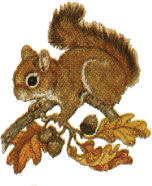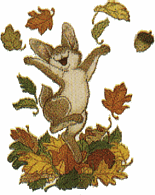|
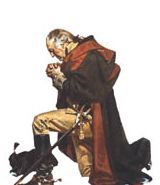 GIVING
THANKS: GIVING
THANKS:
TAKE AN ATTITUDE OF GRATITUDE.
Why not make this Thanksgiving a day to begin taking better
care of yourself and others? You can start by developing an attitude
of gratitude towards others and yourself that lasts beyond the
fourth Thursday of November.
Attitude. Your
perception of and beliefs about events, situations and people -- can
increase stress and negatively impact your physical and emotional
well-being.
Changing
your perceptions about and reactions to stress-causing events and
people in your life may, in turn, positively impact your health and
well being.
 Getting
Started. To
help you get started, here are some tips and strategies: Getting
Started. To
help you get started, here are some tips and strategies:
1.
Make a list of all the people and things in your life for which you
are grateful. Consider:
*People
and Animals
(such as parents, friends, spouses,
your pets, wildlife around you, superiors, co-workers, teachers,
acquaintances, people who have died, etc.) that you know or have
known.
*Possessions
(such as gifts, jobs, houses, apartments, income, cars, computers,
etc.) that you have or have had.
*Events
(such as birthdays, vacations, job accomplishments, educational
achievements, parties, reunions, social and charitable involvement, etc.) that you have experienced.
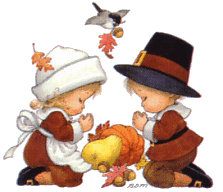 *Opportunities
for personal growth and development
(such as relationships, sharing, learning from others, helping others,
etc.) that you have or have had. *Opportunities
for personal growth and development
(such as relationships, sharing, learning from others, helping others,
etc.) that you have or have had.
2.
Make a list of *why* you are grateful for each of the above and define
ways in which you can identify more of those people or create more of
those things in your life.
3.
Identify ways you can acknowledge and show your gratitude.
For
example, send a letter or card to:
*Your
parents *Your grandparents
*A current or old friend
*A
neighbor *Your boss or supervisor
*A current or former teacher or
professor
*An
organization, agency or store that has been particularly helpful to
you or your family.
4. Get
involved. Make a difference in your community, the environment,
etc. Contact your local home for the aged, community service center,
animal shelter or an organization you believe in and ask what you can do.
5.
Increase your awareness of and gratitude for abilities and common
events that are often taken for granted. For example:
 *Notice: *Notice:
*The
sunrises and sunsets
*The faces of individuals
*The smile of a dog
*The
color of flowers and trees *The architecture of buildings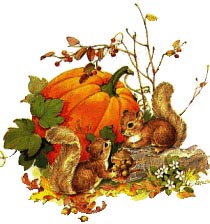 *The clouds
*The clouds
 *Listen
to: *Listen
to:
*The
chirping birds
*To the rustle of leaves
*The purr of a cat
*The
laughter of people
*The sounds of automobiles
*And
the tone and pitch of your own voice
 *Feel: *Feel:
*The
ground on which you are standing
*The softness of a dog or cat
*The
chair in which you are sitting
*The
muscles holding your body upright
*The
leaves of a tree
 *Increase
your awareness of your physical abilities such as: *Increase
your awareness of your physical abilities such as:
*Turning
your head *Reaching out to shake someone's hand
*Smiling
*Swallowing
*Breathing
Notice
how different air and water temperatures feel on your skin.
Focus
on the taste and smell of different foods.
Notice
the feel of wind, rain and snow.
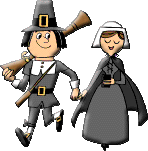 Thank
Yourself, Too. Increasing
your ability to thank yourself (or to allow others to show their
gratitude toward you) is also important to your health and well being. Thank
Yourself, Too. Increasing
your ability to thank yourself (or to allow others to show their
gratitude toward you) is also important to your health and well being.
To
begin developing an attitude of gratitude about yourself, try some of
the following:
1.
Increase your awareness of when you put yourself down (verbally or in
your mind).
When
you catch yourself, stop the negative thought and re-frame it as a
positive.
2. Assess if you
are more critical of yourself than you are of others. If so, analyze why.
Re-frame your thoughts so that you view yourself in a more positive,
forgiving light.
3.
Give yourself credit and thank yourself for all of the nice things you
do or have done for others.
4.
When someone gives you praise or shows gratitude toward you, learn to
say "thank you" and to *feel* the other's appreciation.
 People
Helping People. This
Thanksgiving I would like to thank all the people I have come in
contact with, both in my professional and personal life. They have all
touched and influenced me and made my life more meaningful.
Sincerely, Vivian Krug-Hotchkiss ~ Emotions Greeting Cards People
Helping People. This
Thanksgiving I would like to thank all the people I have come in
contact with, both in my professional and personal life. They have all
touched and influenced me and made my life more meaningful.
Sincerely, Vivian Krug-Hotchkiss ~ Emotions Greeting Cards
©2001 Emotions Greeting Cards - VH
Productions. All Rights Reserved
|

![]()
![]()
